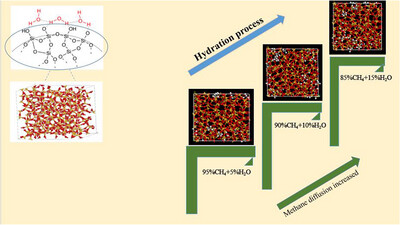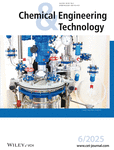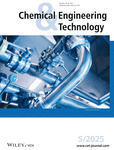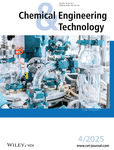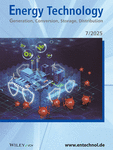Chemical Engineering & Technology is an international journal with a 40-year reputation as a forum for chemical engineers looking for first-hand information and the latest developments in all areas of chemical and process engineering.
Our scope also covers chemical plant design, plant equipment, simulation, modeling, biotechnology, and engineering in life sciences. We publish contributions written and refereed by outstanding professionals from around the world.
Journal Metrics
- 3.6CiteScore
- 1.6Journal Impact Factor
- 22%Acceptance rate
- 124 days Submission to first decision
On the Cover
Articles
Sustainable Adsorbents for Wastewater Treatment: Template‐Free Mesoporous Silica from Coal Fly Ash
- 17 July 2025
Graphical Abstract

This study demonstrates highly effective and reusable methylene blue (MB) removal using coal fly ash-derived silica. Over 12 cycles, consistent 97 % MB removal was achieved, surpassing other reported silica adsorbents. This highlights the material's economic potential and promotes sustainable waste repurposing for environmental remediation.
Functional Coating of NPK Granules with Pyrolysis Oils for Enhanced Slow‐Release Performance
- 17 July 2025
Graphical Abstract
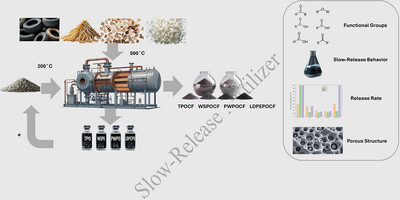
Four types of slow-release NPK fertilizers were prepared by coating granules with pyrolysis oils derived from both bio-based and petroleum-based polymeric waste materials. The functional groups present in these oils played a crucial role in strong chemical interactions with ions of the fertilizer, leading to the formation of porous coatings. This porous structure effectively slowed the release of nutrients. Among the coatings, those made from lignocellulosic feedstocks exhibited improved nitrogen retention and a more controlled release profile. This approach demonstrates how waste streams can be transformed into efficient agricultural inputs, offering an eco-friendly alternative to synthetic coatings and advancing sustainable nutrient management practices.
Simulating the Dehydration Process by Adsorption and Diffusion of H2O and CH4 on the Silica
- 15 July 2025
Modeling Iron Ore Breakage with the Tavares Model and DEM Simulation of a Laboratory Jaw Crusher
- 15 July 2025
Graphical Abstract
Reactor Modeling to Evaluate the Effect of Reactions Mass Balances on Sulfur Removal in Gasoil HDT
- 8 July 2025
Graphical Abstract
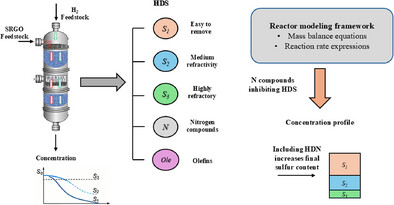
Understanding how each mass balance equation affects the sulfur removal is relevant for proper simulation of HDT reactor. This study uses reactor modeling to assess the individual and combined effects of HDT reaction mass balances on HDS performance, offering insights into inhibition phenomena and hydrogen consumption critical for ULSD production.
The following is a list of the most cited articles based on citations published in the last three years, according to CrossRef.
Lignin Depolymerization and Conversion: A Review of Thermochemical Methods
- 29-41
- 15 November 2010
Graphical Abstract

An efficient and commercially competitive lignocellulosic biorefinery requires optimum utilization of all biomass components. Till date, lignin is the most underutilized component of a lignocellulosic biomass. However, lignin depolymerization with selective bond cleavage can convert it into various value-added chemicals including monomeric phenols and phenolic aldehydes.
Biohydrogen Production Through Dark Fermentation
- 601-612
- 8 January 2020
Graphical Abstract

Hydrogen is an excellent energy vector and carrier. Dark fermentation as well as integrated dark fermentation and photofermentation are environmentally benign routes for biological hydrogen production. Optimization of fermentation parameters as well as employing versatile microorganisms can result in maximizing biohydrogen production from a wide variety of organic residues.
Solid‐state Materials and Methods for Hydrogen Storage: A Critical Review
- 213-226
- 28 January 2010
Graphical Abstract

Hydrogen is important as a new source of energy for automotive applications. It is clear that efficient hydrogen storage is required to develop this technology. Hydrogen solid-state storage materials and methods including carbon based materials, metal hydrides, metal organic frameworks, hollow glass microspheres and capillary arrays, clathrate hydrates, metal nitrides and imides, doped polymer and zeolites, are critically reviewed.
Size and Shape of Calcium Alginate Beads Produced by Extrusion Dripping
- 1627-1642
- 10 September 2013
Graphical Abstract

The influence of significant process variables like alginate properties, formulation and preparation of alginate and gelling solutions, production conditions, and post-production treatment on size and shape of Ca-alginate beads is reviewed. Various methods for bead size determination and shape analysis are described in detail and discussed.
CO2-Alkanolamine Reaction Kinetics: A Review of Recent Studies
- 1467-1474
- 26 October 2007
Abstract
Alkanolamines are the most popular absorbents used to remove CO2 from various process gas streams. Therefore, the CO2 reaction with aqueous alkanolamine solutions is of considerable importance. This article gives an overview of recent studies on these reaction systems. In addition, the kinetic behavior of several novel amine-based solvents is analyzed.
Latest news
Recent issues
- Volume 48, Issue 7July 2025
- Volume 48, Issue 6June 2025
- Volume 48, Issue 5May 2025
- Volume 48, Issue 4April 2025









